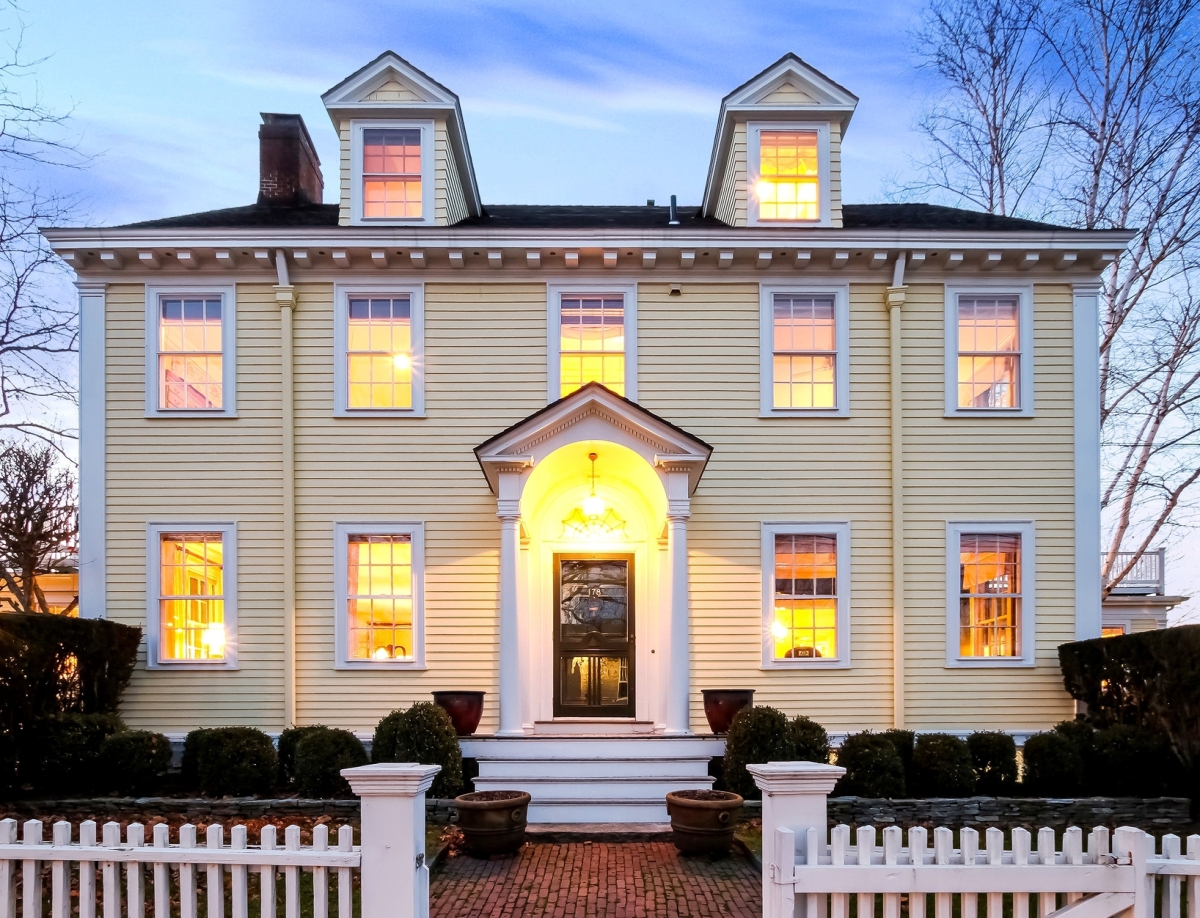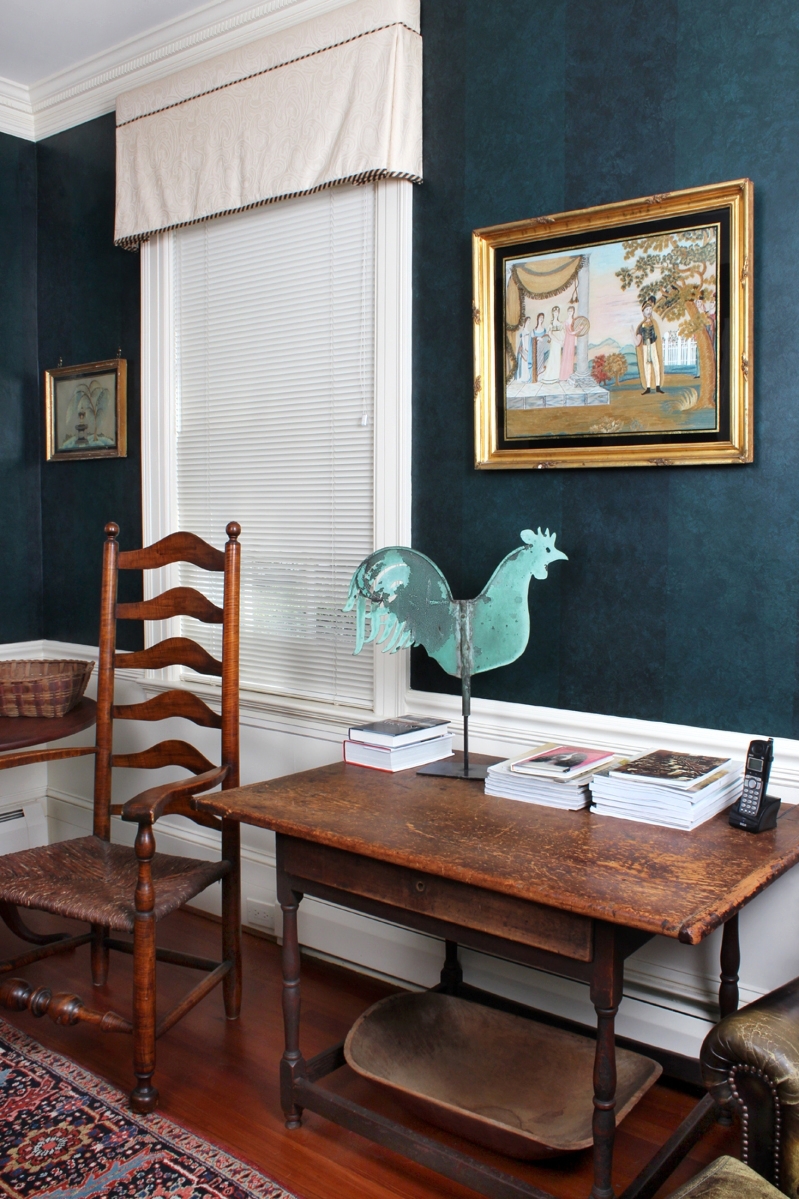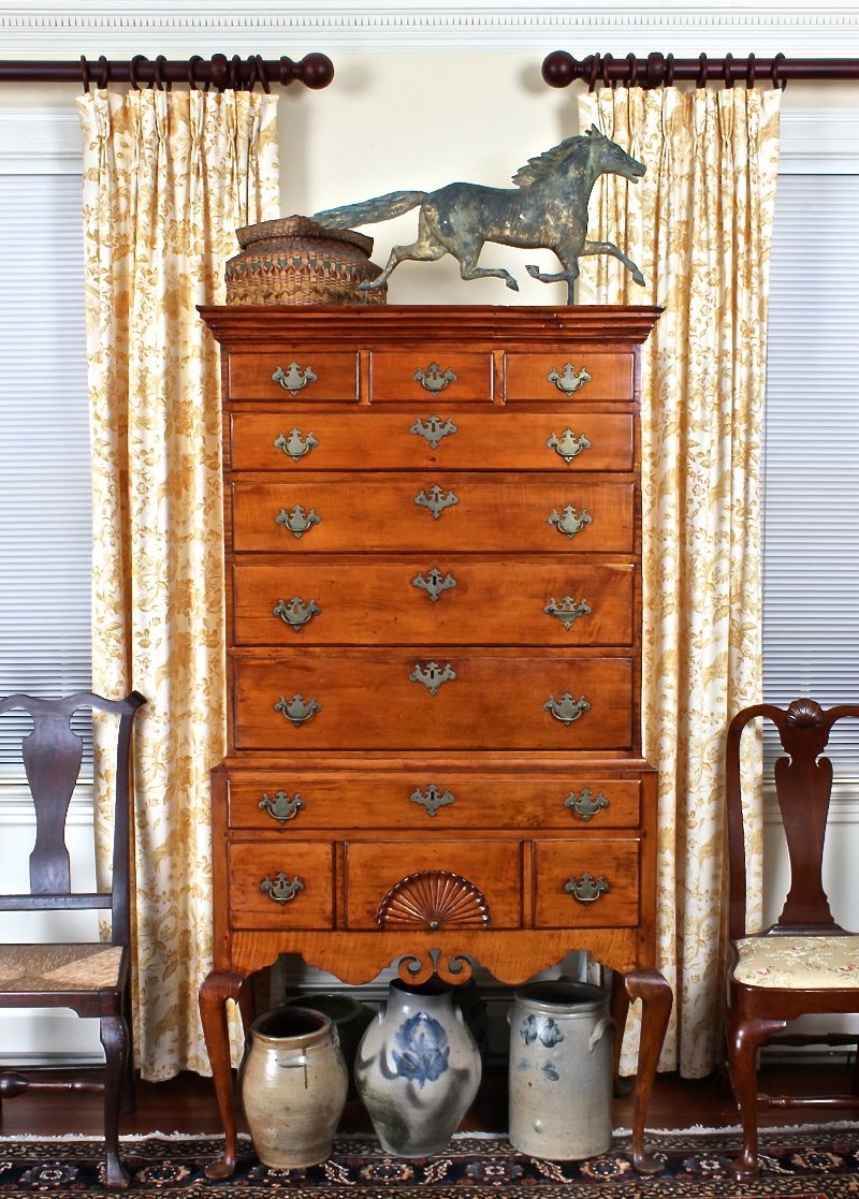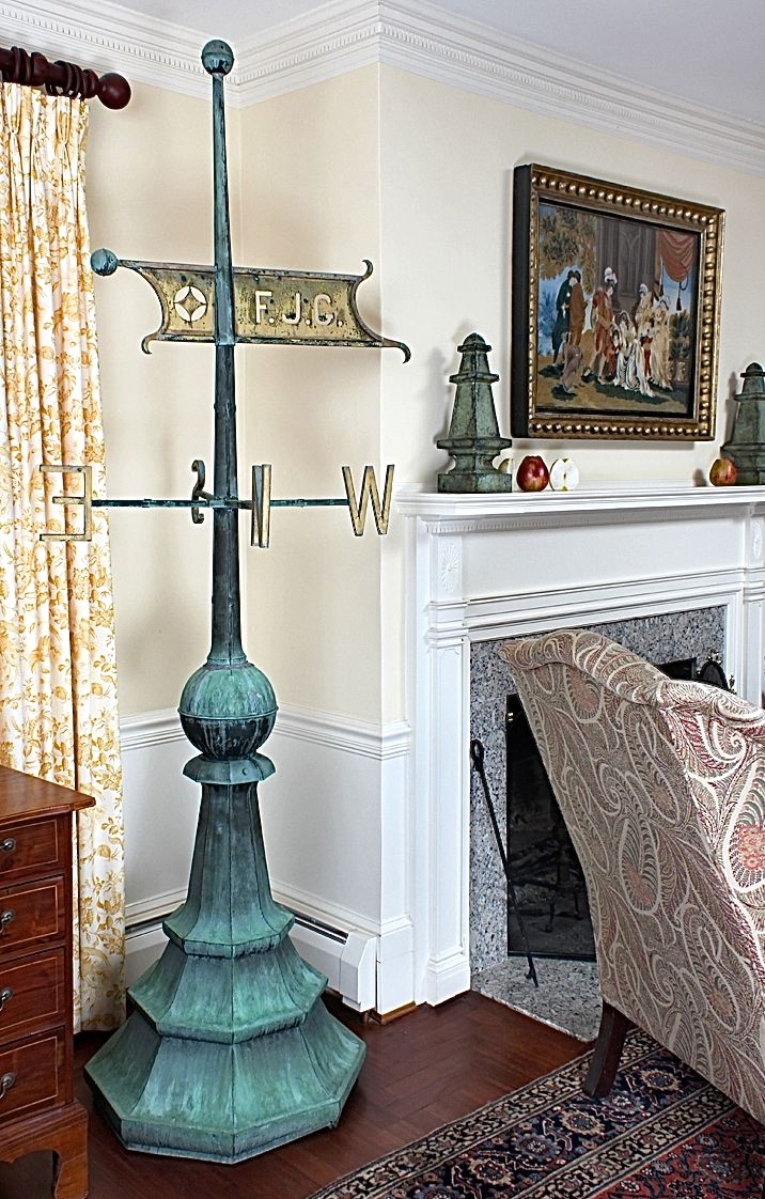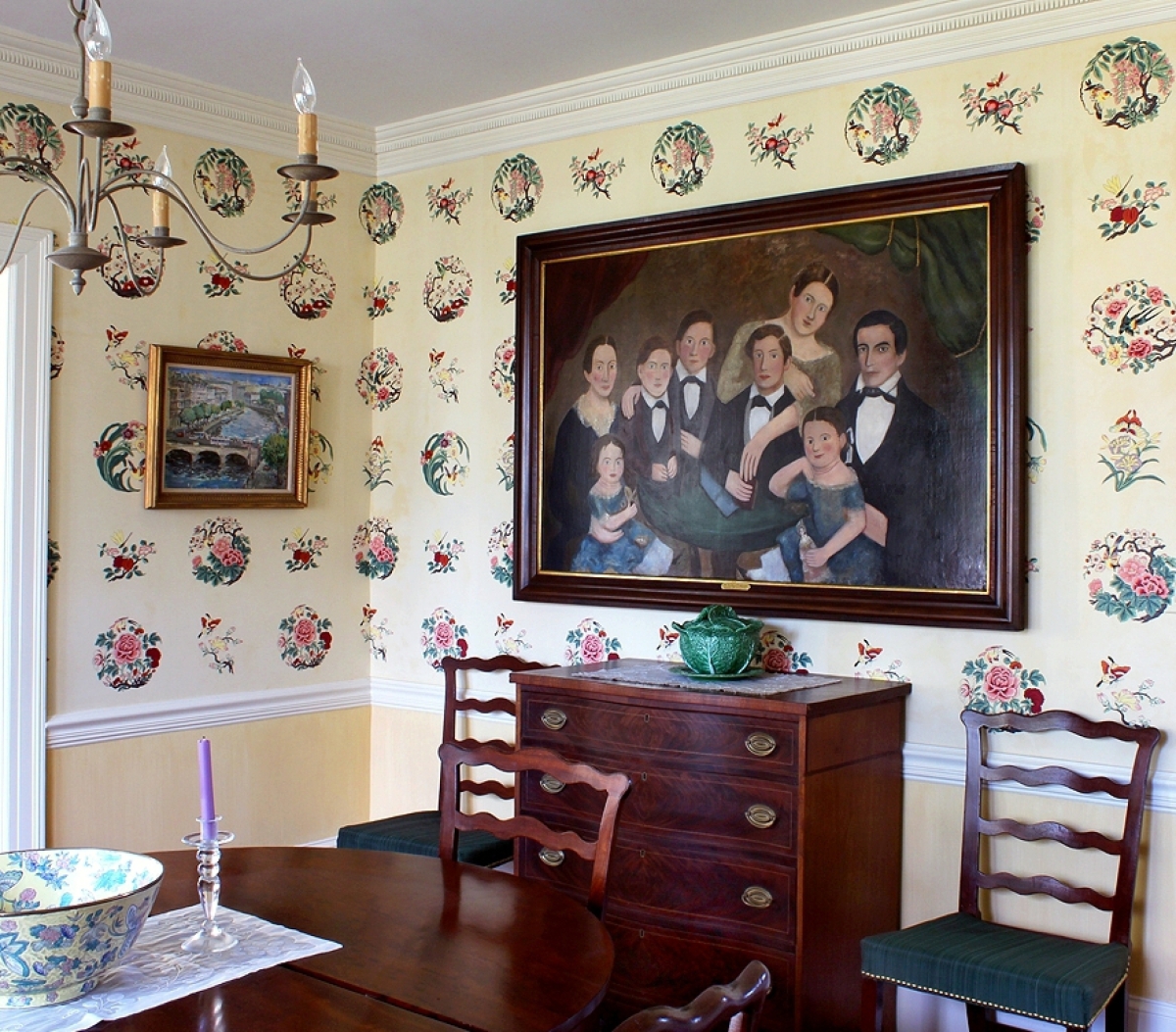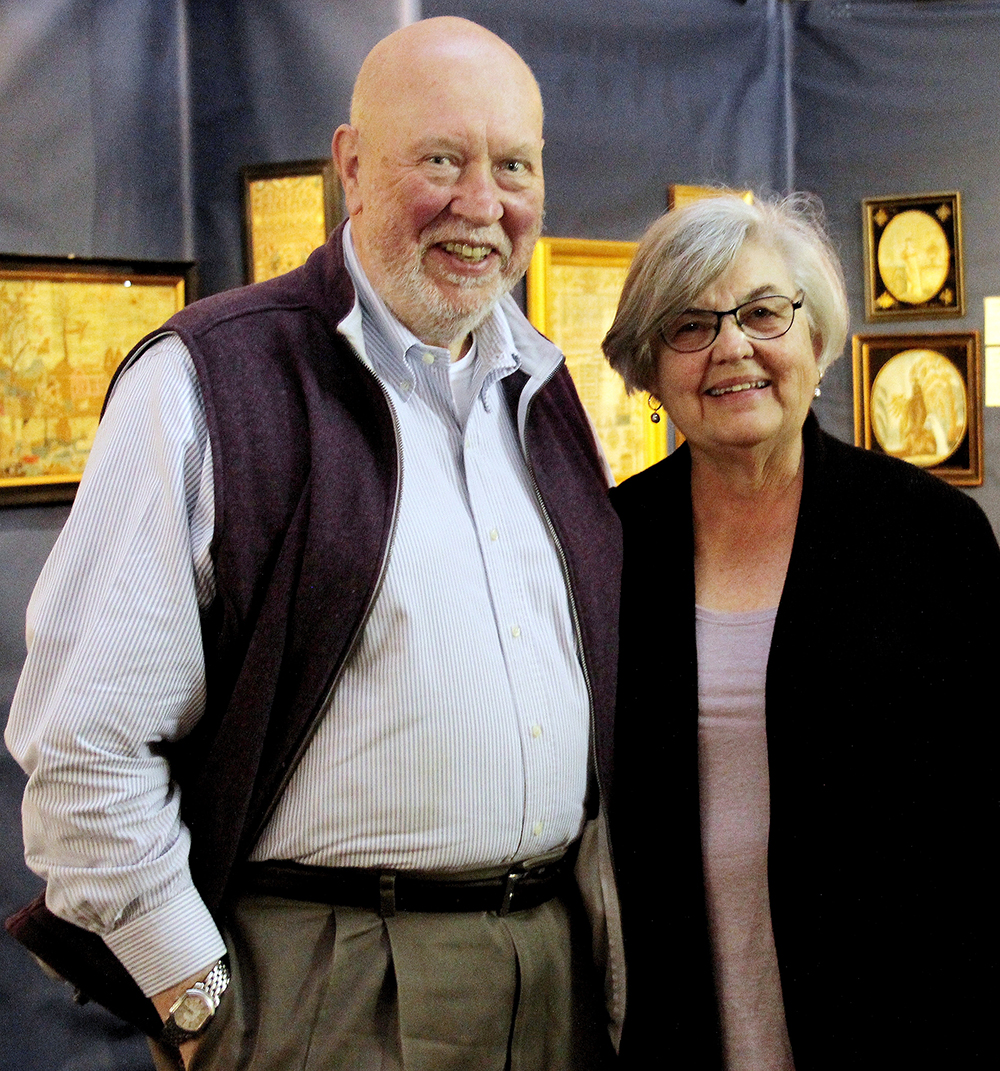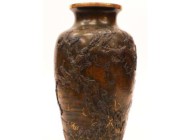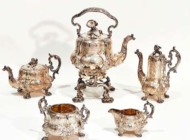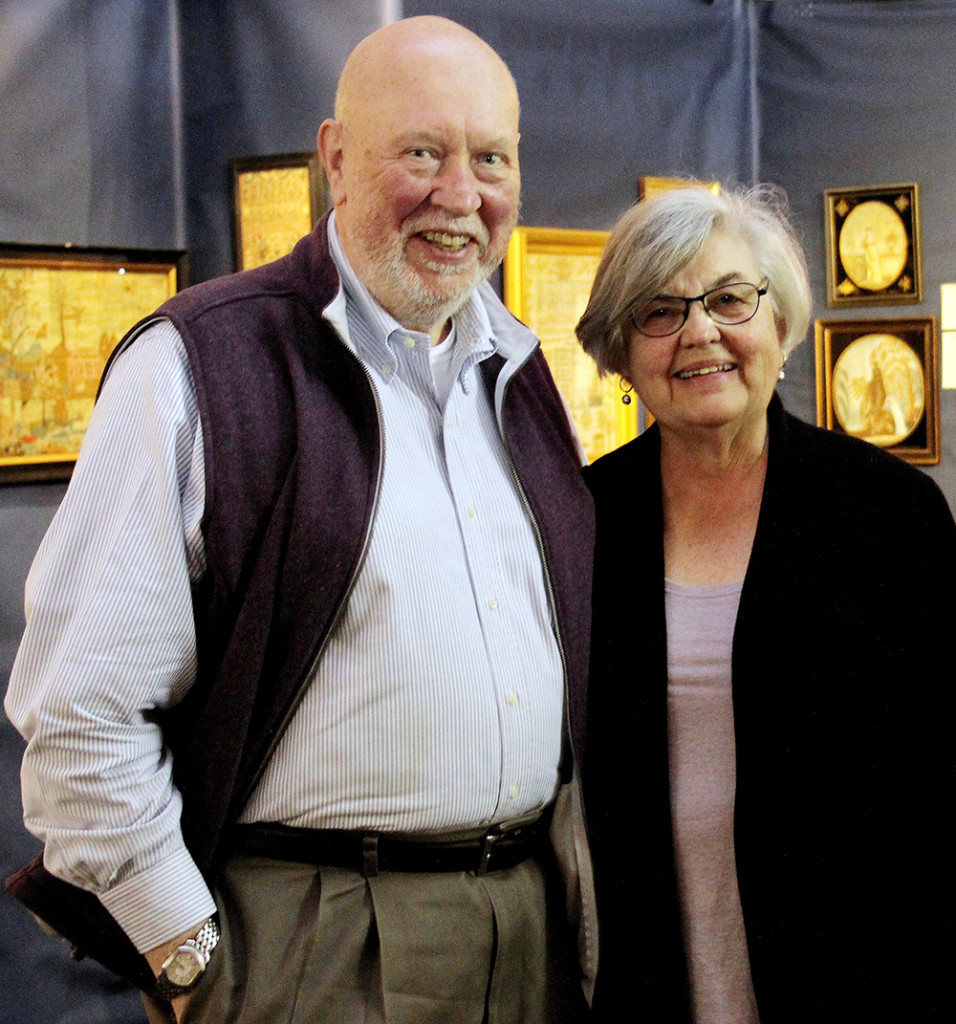
Jim and Pam Alexander, photographed in Stephen and Carol Huber’s booth at the Philadelphia Antiques and Art Show in April 2017.
By Laura Beach
MARLBOROUGH, MASS. – The Americana world is filled with couples who enjoy nothing so much as their shared pursuit, acquisition and study of special objects. Jim and Pam Alexander, whose collection Skinner is featuring in its upcoming Americana sale on Sunday, August 13, at the tail end of New Hampshire Antiques Week, exemplify this. Over the decades that they have been collecting, this friendly, outgoing couple have rarely missed an important antiques show or auction, have benefited from the education and fellowship offered by museum collecting circles and have come to know most members of the trade.
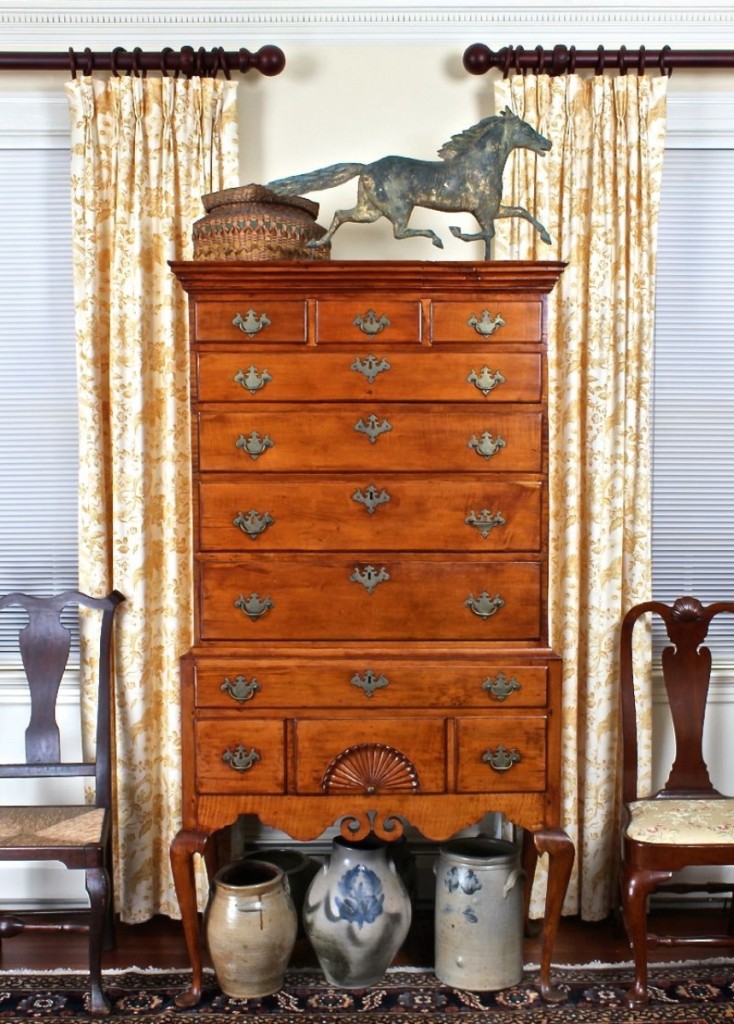
A focal point of the living room was the late Eighteenth Century Dunlap school maple high chest of drawers from New Hampshire, paired here with a molded copper Smuggler running horse weathervane, stoneware and one of many baskets for sale.
Good cheer pervaded the Alexanders’ sunny, yellow house just off the green in the seaside village of Stonington, Conn. During the years they lived there, the Alexanders made the relaxed family home warm and comfortable, proving, as Skinner partner and Americana chief Stephen L. Fletcher put it, “that you really can put together a nifty environment that is in no way old-fashioned or dated.”
With their children and grandchildren now scattered, the Alexanders, ready for a change, moved to a smaller house in Williamsburg, Va., nearly three years ago, eager to partake in the area’s cultural amenities in the company of old friends. They took what antiques they could and, their love of Americana undiminished, are still collecting, though at a less frenetic pace.
Originally from the Midwest, the Alexanders were returning from their honeymoon on Michigan’s Mackinac Island in 1965 when they bought their first antique, a round, oak pedestal table. After their careers took them to New England and New York, they began frequenting auction houses, first Julia and Cyr in Maine, then Northeast in New Hampshire, Skinner in Massachusetts, and Sotheby’s and Christie’s in New York City. When they got to know dealers, their real education began.
“Dovetails, chamfered drawer bottoms, glue blocks, brasses, original finish, old paint, veneers and inlays, tiger maple – it was endless,” they recall. At night, Jim pored over auction catalogs in a study lined with books and periodicals on antiques.
The Alexanders approached seven auction houses before signing on with Skinner, doing so with the help of Nancy Druckman, whom they hired to advise them on the sale. They met the former Sotheby’s specialist 20 years ago through their daughter, Libby, then a business administrator at Sotheby’s.
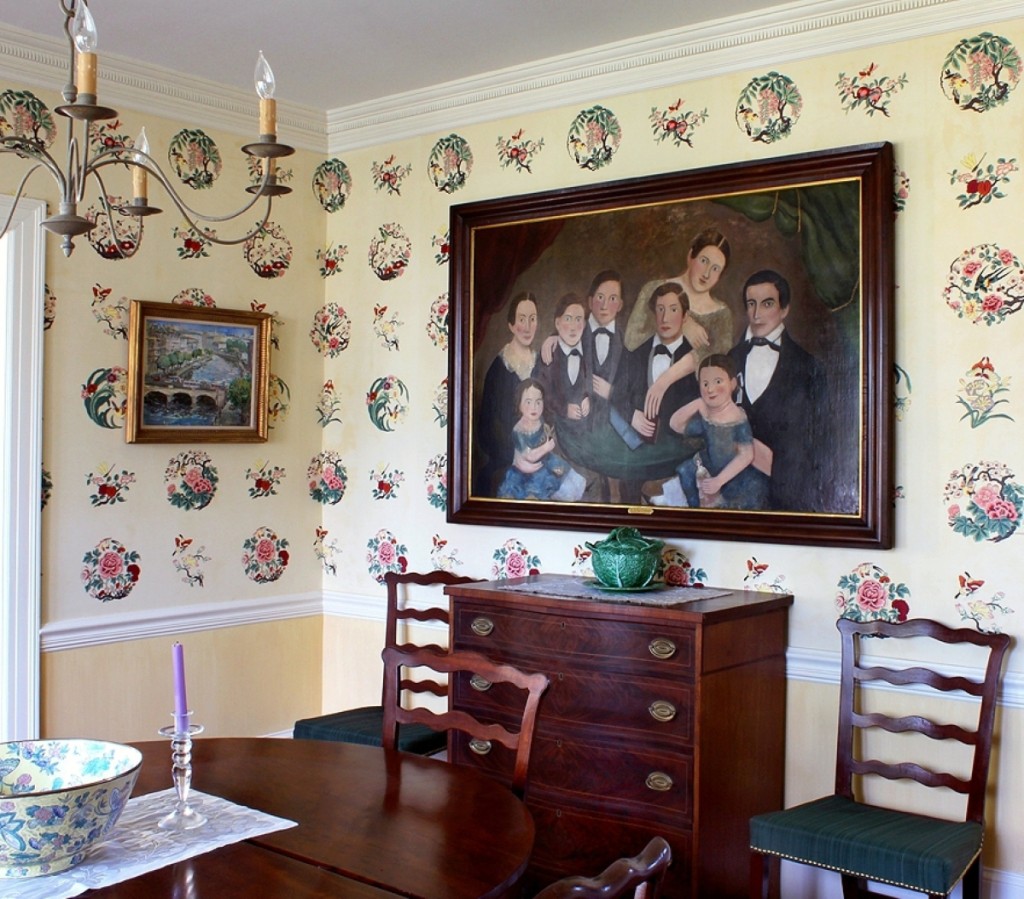
Formerly in the collection of Colonel Edgar and Bernice Chrysler Garbisch, the large portrait of a family of eight hung in the Alexanders’ dining room.
As Druckman explains, “My role has been to study their collection with them, identify their needs and determine their best-case scenario, in terms of location, timing, terms, marketing and cataloging. Together we ‘surveyed the landscape’ of options for selling. We looked for the best fit. Ultimately, it was the Alexanders’ decision to go with Skinner.”
Skinner picked up the collection in May. The detail-oriented Alexanders kept receipts, which Skinner referred to for provenance and other details, but largely ignored where pricing was concerned. Estimates reflect current values, Fletcher says. Just over 100 lots are described in detail in Skinner’s August Americana catalog, which allocates a dedicated section to the Alexander property. There will also be a dedicated landing page for the trove at www.skinnerinc.com.
“The collection has a strong New England presence,” says Druckman, describing the Alexanders as “thoughtful, thorough, disciplined collectors. They are drawn to great, untouched, original, often painted surfaces. Surface rules.”
Among more two dozen lots of furniture is an Eighteenth Century Salem serpentine bureau with string inlay and a carved shell pendant. “It is a very successful piece of furniture,” Fletcher says of one of his favorite pieces.
A Dunlap school tiger-maple high chest of drawers on cabriole legs has a shaped and scroll carved apron. Topped with a weathervane and basket, the chest was until recently a focal point of the Alexanders’ Stonington living room.
A Newport dish top candlestand of circa 1780 came from Samaha Antiques in Milan, Ohio, while a circa 1760 shell carved Newport side chair is identical to one in Henry du Pont’s bedroom at Winterthur. With a knack for display, the Alexanders grouped a collection of small Chippendale mirrors, a half-dozen of which are for sale, on their stair hall wall.
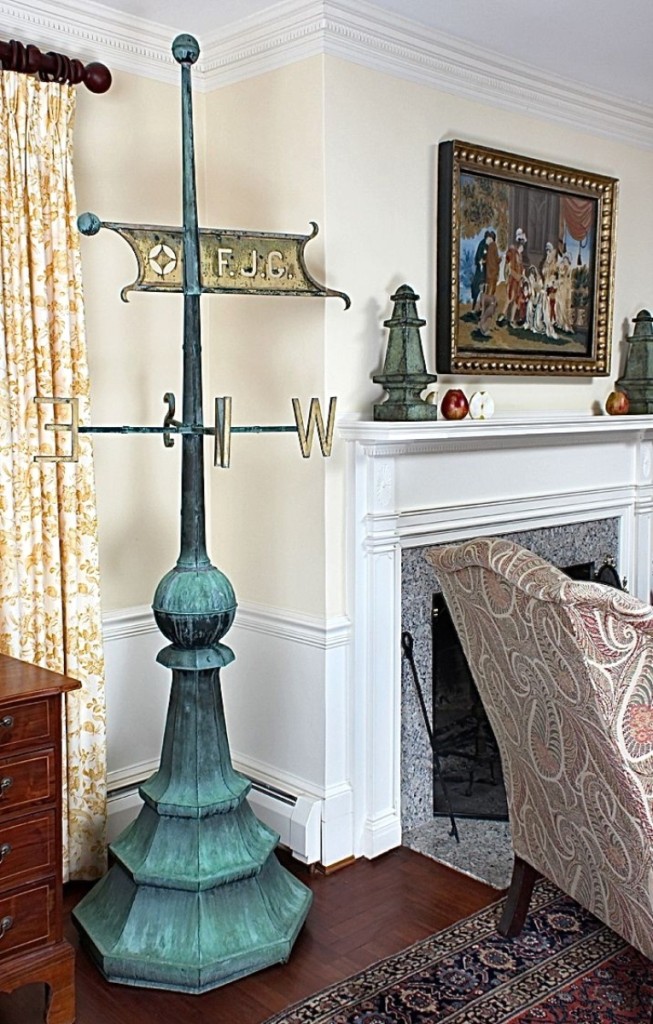
The large, molded sheet-copper bannerette weathervane dates to circa 1860–90. The initials “F.J.G.” suggest that it was made for mill owner Flavius J. Goodspeed of Wilton, Maine. The obelisk-form copper finials date to the Nineteenth Century.
Portraiture ranges from a large oil, formerly in the Garbisch collection, depicting a family of eight to an Auguste Edouart silhouette of a Maine family of four. There are pastoral scenes by Barton Stone Hays and Arthur Fitzwilliam Tait, a late Nineteenth Century ship’s portrait and a contemporary rustic view by Wayne Cooper.
“The piece that charmed me down to my toes is a panoramic rug by Marie Hendrycy. It’s a full landscape, a farm scene, and measures 46 by 90 inches. Through research, Jim discovered the name and history of the maker. It’s such an audacious conception,” says Druckman. In all, the sale features nearly a dozen hooked rugs, plus silk embroideries worked at the Balch School in Providence, R.I., and the Misses Pattens’ School in Hartford, Conn.
“I’m drawn to a copper ring-necked pheasant with beautiful color,” says Fletcher, citing one appealing weathervane. Other vanes include a rooster, a Smuggler running horse and a large, freestanding copper bannerette initialed “F.J.G.” The latter is thought to have topped a mill owned by Flavius J. Goodspeed of Wilton, Maine. The Alexanders purchased the sculpture, which survives with its original directional, from George and Debbie Spiecker in 1999.
“This collection has filled not only the Alexanders’ homes, but has been such an important centerpiece of their lives,” Druckman reflects.
And what became of the Alexanders’ first purchase, the oak pedestal table? It ultimately became the games table in the South Portland, Maine, summer cottage owned by Libby and her husband, Bob.
“Our granddaughters call it the ‘Honeymoon Table,'” Jim says.
Skinner’s Marlborough salesroom is at 274 Cedar Hill Street. For further information, www.skinnerinc.com or 508-970-3000.

